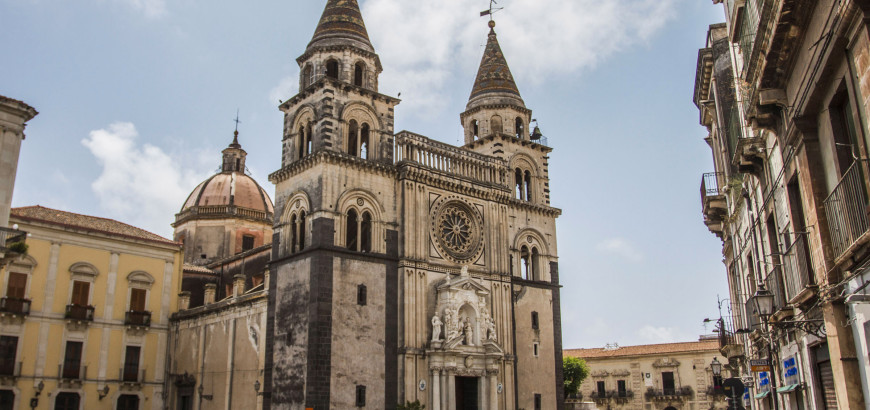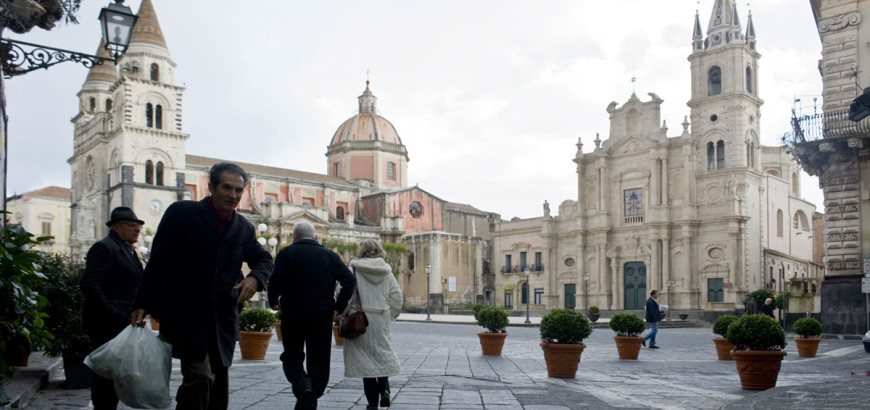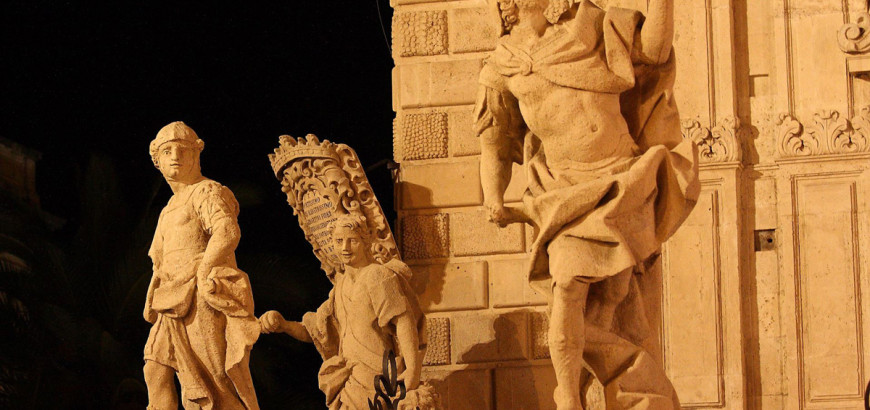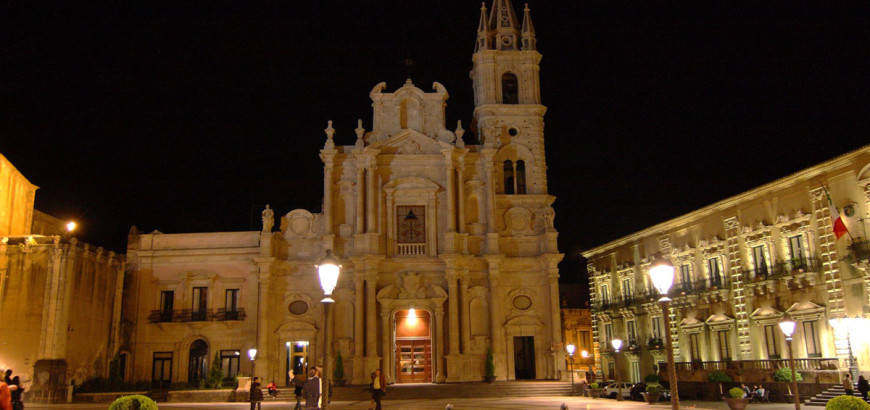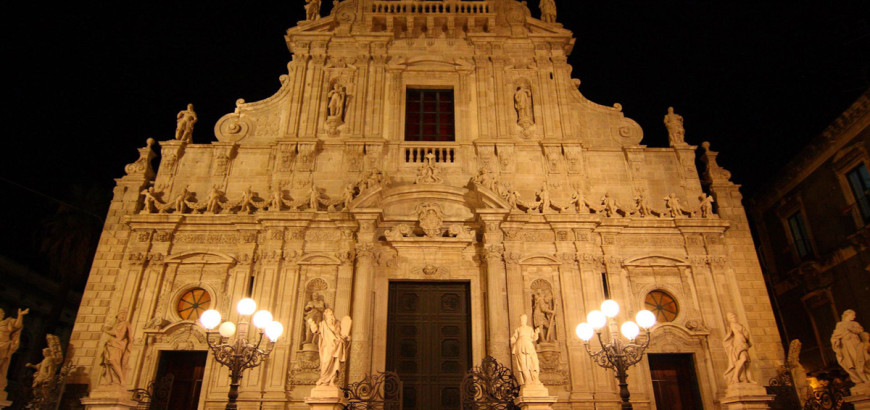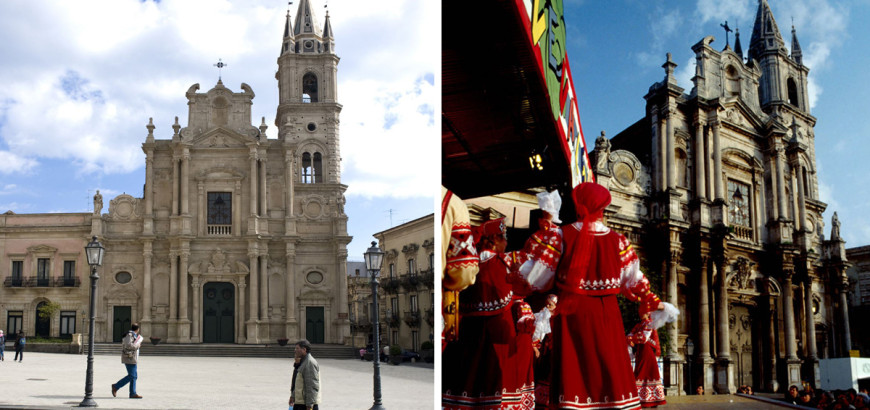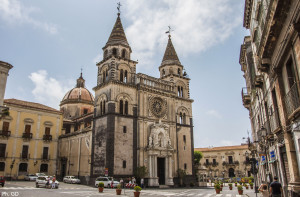
Cathedral of Acireale (Duomo)
095 601797
In Piazza Duomo, the cultural and monumental center of Acireale, there is the Cathedral dedicated to Maria Santissima Annunziata, but commonly linked to the cult of Santa Venera, patron of the city, whose relics are kept inside.
The original church dates from the fifteenth century and has undergone many changes over the years until 1872, the year in which it was awarded the title of “Cathedral”, Acireale since it became independent dioceses. Perceptible to the eye are the additions to the original structure have been made over the centuries. The result is a system with more architectural styles.
In the fifteenth century the Cathedral was composed of a single chapel but afterwards, thanks to donations and corporate rich and noble families residing in the city, the cathedral was enlarged. The Meridian and the listing date from the seventeenth century, instead the marble portal that was created by Placido Blandamonte dates back to 1668. The two towers octagonal base, however, are in Gothic style but were built at different times. The south tower dates back to 1544, the second (while maintaining the same building style) instead dates from the late nineteenth century by Stefano Ittar and Giovan Battista Filippo Basile.
The internal structure of a Latin cross, is in Baroque style and was built in the period from the late seventeenth century until the first half of the eighteenth century. Many of the works kept inside as the Chapel of Santa Venera, in which the relics of the saint, the statue that depicts sculpted by Mario D’Angelo in 1651 and fercolo silver dating from 1658-1670.
The frescoes in the chapel were painted by Antonio Filocamo, while others in the transept and the dome are by Pietro Paolo Vasta, between 1738-1739. The time instead was frescoed by Giuseppe Sciuti in the late nineteenth century. Very beautiful is the sundial decorated with the signs of the zodiac preserved in the transept and created by C.F. Peters in 1844 and decorated by G. F. Boccaccini shortly after.
